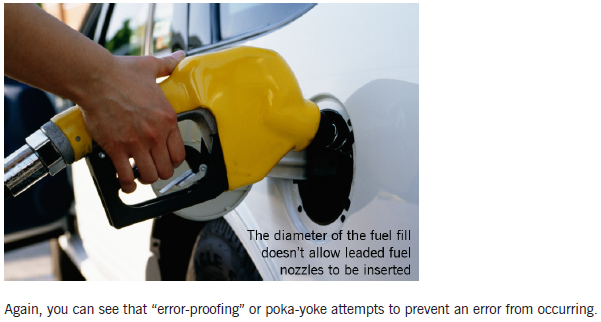Poka-yoke (poh ka yoke) is a mistake-proofing approach to eliminating errors that was developed by the Japanese engineer Shiego Shingo in the 1960s. The word “poka-yoke” is derived from a Japanese word that means “to avoid errors.” Poka-yoke makes use of simple but effective tools and signals to prevent errors from occurring.
Example 1: The widespread use of ATMs has certainly made banking more convenient and shows no signs of diminishing usage. However, early on, the banks encountered a very inconvenient problem; customers regularly drove off from the ATM leaving their debit cards in the card slot of the ATM. A simple but effective poka-yoke has been incorporated in the ATMs so that an alarm sounds and continues to sound until you have taken your card from the slot. This type of poka-yoke can be thought of as an encounter error-proofing example since it intervenes in the service encounter and attempts to prevent a mistake (in this case, a mistake by the customer).
Example 2: A very common poka-yoke is involved every time we purchase fuel for our automobiles. When unleaded fuel was introduced, there were many automobiles on the road that still used leaded fuel. In order to prevent leaded fuel from being placed in unleaded automobiles, the size of the fuel inlet was changed so that the leaded fuel dispense nozzle would not insert.




